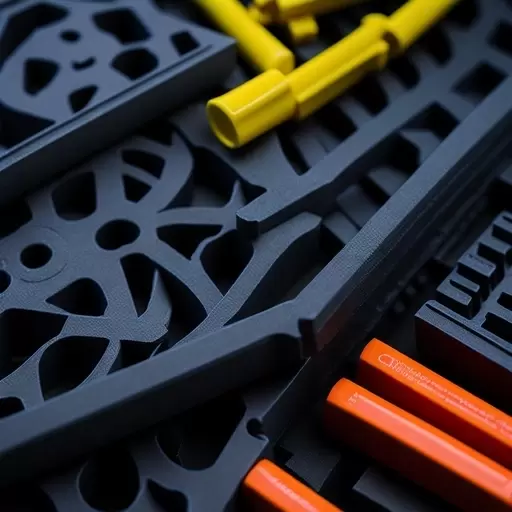Table of Contents:
- Introduction
- Characteristics of Thermoplastic Materials
- Characteristics of Thermosetting Materials
- Comparison of Thermoplastic and Thermosetting MaterialsConclusion
- Conclusion
-
1. Introduction
Thermoplastics and thermosetting materials are two of the most common types of plastics used in manufacturing. Understanding the differences between these two materials is crucial in determining the most suitable material for a specific application. This article aims to provide an in-depth look into the key characteristics, advantages, and disadvantages of thermoplastic and thermosetting materials.
-
2. Characteristics of Thermoplastic Materials
Thermoplastic materials are polymers that can be melted and re-molded multiple times. They are known for their ductility, meaning they can be easily shaped or formed without breaking. Some common examples of thermoplastic materials include polyethylene, polypropylene, polycarbonate, and polyvinyl chloride. Thermoplastic materials have several key properties, including:
- High strength and durability
- Good chemical resistance
- High impact resistance
- Good electrical insulation properties
One of the key advantages of thermoplastic materials is their ability to be easily molded or shaped, making them ideal for use in injection molding and other manufacturing processes. However, they do have some disadvantages, including their lower heat resistance compared to thermosetting materials and their tendency to soften or deform under high temperatures.
-
3. Characteristics of Thermosetting Materials
Thermosetting materials are polymers that undergo a chemical reaction when heated and then become permanently solidified and cannot be re-molded. Examples of thermosetting materials include epoxy resins, phenolic resins, and polyurethanes. Key properties of thermosetting materials include:
- High heat resistance
- Excellent dimensional stability
- Good electrical insulation properties
- High strength and rigidity
Thermosetting materials are often used in applications where high temperatures, chemical resistance, and dimensional stability are critical, such as in the manufacturing of electrical components and aerospace parts. However, one of the disadvantages of thermosetting materials is their inability to be re-molded or reshaped, making them less flexible than thermoplastic materials.
-
4. Comparison of Thermoplastic and Thermosetting Materials
There are several key differences between thermoplastic and thermosetting materials. One of the main differences is that thermoplastic materials can be re-molded multiple times, while thermosetting materials become permanently solidified after the initial curing process. Additionally, thermosetting materials generally have higher heat resistance and better dimensional stability than thermoplastic materials. However, thermoplastic materials tend to be more ductile and have better impact resistance than thermosetting materials.
When choosing between thermoplastic and thermosetting materials, several factors should be considered, including the specific application requirements, environmental conditions, and the manufacturing process used. For example, thermoplastic materials may be more suitable for applications where flexibility and ease of molding are important, while thermosetting materials may be better for applications where high heat resistance and dimensional stability are critical.
-
5. Conclusion
In conclusion, understanding the differences between thermoplastic and thermosetting materials is important for selecting the most suitable material for a specific application. While thermoplastic materials offer greater flexibility and ease of molding, thermosetting materials offer better heat resistance and dimensional stability. By taking into account the specific application requirements, environmental conditions, and manufacturing process used, manufacturers can select the most appropriate material for their needs.




